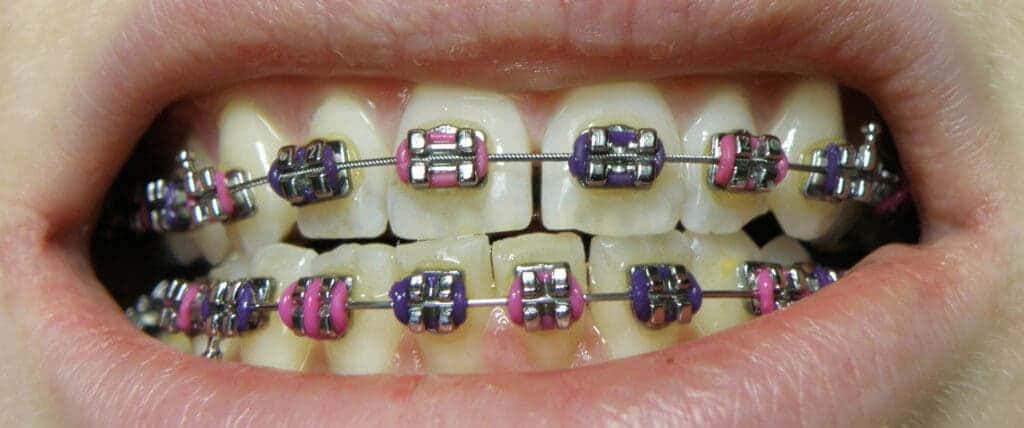
People have become increasingly concerned about their oral health, not just for health reasons, but also for aesthetic and social reasons. As such, demand for orthodontic treatments has seen steady growth year after year, despite the high costs involved and the discomfort often associated with the treatment.
What’s particularly surprising is that there are people who don’t have any actual problems (teeth that are out of line, heavily worn or constantly breaking, loose teeth or receding gums) but nevertheless choose to get braces for fashion reasons. That may seem odd to a lot of people who’ve been forced to wear braces by their parents, but fashion braces are trending on some corners of social media.
In some South Asian countries, for instance, orthodontic treatment is considered a luxury, so by association braces are seen as a symbol of financial prosperity. Fashion braces are often decorated with esthetic designs and jewelry, making them popular products, especially among teenagers.
Since they are not meant to address any oral health problem like conventional braces, fashion braces are generally much cheaper and can be fitted in any dental office or even at home by users.
But are there any risks to fashion braces? Researchers led by Zaki Hakami from Jazan University in Saudi Arabia conducted the first study of its kind that investigated the effects of fashion braces on oral health related quality of life (OHRQoL).
OHRQoL is a subjective evaluation of an individual’s oral health, functional wellbeing, emotional wellbeing, expectations, and satisfaction. Previously, studies found that a patient’s OHROoL is significantly worse once they start wearing braces due to oral symptoms and functional limitations. However, a patient’s emotional wellbeing improves by wearing fashion braces.
The study involved 1,141 people from Saudi Arabia whose OHRQoL was assessed using Oral Health Impact Profile-14 (OHIP-14) questionnaire. The participants were divided into three distinct groups: more than 60% of the participants were in the control group (they didn’t wear any kind of braces), 33.7% had conventional braces for therapeutic reasons, and 3.4% had fashion braces.
Participants were asked to rate the frequency of negative experiences regarding oral health during the previous 12 months. These included things such as difficulty pronouncing words, a sense of worsening taste, painful aching in the mouth, discomfort when eating, feeling self-conscious or tense, interruptions of meals, difficulty relaxing, feeling embarrassed, being irritable towards other people, difficulty doing useful jobs, and feeling life, in general, is less satisfactory.
Physical pain was the most frequently reported complaint by all subjects regardless of whether or not they wore braces, but was the highest in the therapeutic braces group. Those who wore fashion braces reported similar levels of physical pain to the control group, suggesting the oral device didn’t cause additional painful experiences.
As compared to participants with fashion braces or therapeutic braces, the control participants had significantly higher psychological discomfort, psychological disability, social disability, and handicap domains.
Therapeutic and fashion braces had negative effects on functional limitation and physical disability but was significantly greater for the therapeutic braces group. Those wearing fashion braces reported the highest improvements in terms of psychological and social outcomes.
Fashion braces are often advertised and sold through social media by influencers and unqualified personnel. The quality of the brackets is often poor and cases of metal toxicity have been previously reported.
“Investigating the impact of those non-therapeutic braces on quality of life is as important as studying uncovering potential health risks because a deeper understanding of the consequences of fashion braces will enable the patients to provide informed consent, have realistic expectations and provide a more accurate analysis of the cost and benefits of the devices,” the researchers wrote in the study.
The study concludes that both therapeutic and fashion braces improve a person’s psychological and social well-being, but the fashion braces group showed much lower levels of psychological discomfort and psychological disability than the therapeutic group. This “means that fashion braces may indeed help people feel more confident and satisfied with themselves,” said the researchers, but at the expense of greater functional limitation and physical disability than the control group.
For instance, people with fashion braces had more problems pronouncing words, felt that their sense of taste worsened, had unsatisfactory diets, and had to interrupt meals due to their braces.
“Positive impacts were reported on psychological and social aspects of people wearing fashion braces. Social media is likely to play a major role in current society and should be included as a priority in future studies. Moreover, further clinical studies are needed to evaluate any adverse effects on dentition such as unwanted teeth movement, root resorption, caries and white spots lesions,” the study concludes.
The findings appeared in the journal BMC Oral Health.


